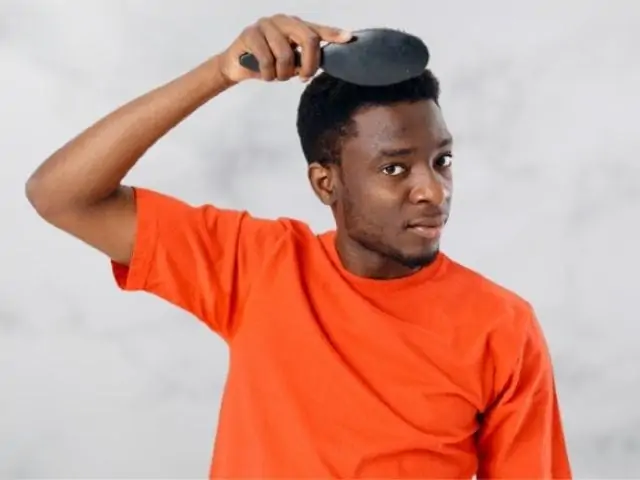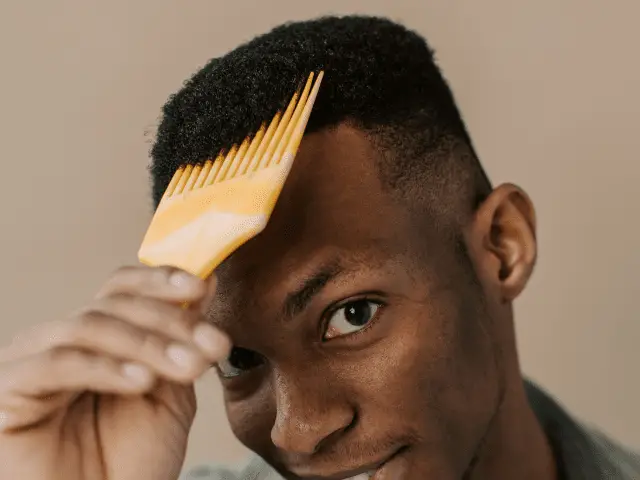If you come across a web article claiming you can get 360 waves in a day, close that tab! Don't spend your time reading tall tales, as 360s aren't an overnight kind of success.
It’s because...
There's a wolfing stage, plus plenty of brushing. Yes, I know the question on your mind now is, what is wolfing?
It’s one of the phrases you’ll hear around 360 wavers, a kind of initiation that’ll test your allegiance to this hairstyle.
We’ll answer all your questions right here as we talk about the activities involved in this phase of creating 360s.
Page Contents
How To Wolf Waves

So, what does wolfing mean?
This period starts the day after your last haircut, which means you count your wolfing time from the day you shave your hair to a manageable length for 360 waves.
During this period, you'll do everything else around how to get waves fast, such as brushing regularly, but you won't cut your hair for a period so that it grows longer to lay it down
It might feel awkward to stay for weeks without cutting your hair, more so because you may look unkempt, but focus on the long-term benefits of this stage.
So, which is the appropriate wolfing time?
On the other hand, if your hair is straight, give yourself about 8 to 12 weeks of wolfing.
This period has phases, with the results starting to show about a month since your last haircut. Let's look at these stages in detail.
Stage 1
This stage starts from the day you decide to stop cutting your hair so you can get stunning 360s. That's when you start counting the weeks to months you'll wolf.
Your hair is not over an inch long at this stage, though the length varies from one hair texture to the other. For straight hair, start with longer hair as such hair takes longer to develop waves.
Stage 2
You're now used to brushing regularly, and you also moisturize your hair daily. The waves are starting to form too. You may opt to brush your hair in the shower when it's soft and easy to lay down.
Stage 3
If you haven't changed to a hard wave brush, you need one so that the bristles penetrate to the root of the hair because your hair is long now. Plus, the new growth also needs to lay down from the hair root while conforming to the pattern.
Stage 4
Now, your hair is craving for a haircut, and its length may tempt you to go ahead and cut it. If it's looking too bad and you're itching for a change, you can get a stylish line-up to clean the hairline. But, keep the trimmer away to define your waves a bit more.
Tips On How To Wolf Waves
- Brush your hair throughout so that it develops an even 360 pattern. If you don't, it may grow outward and curl upward.
- Moisturize your hair to protect it from breakage and frizz.
- Comb before brushing to distribute moisturizing agents from the root to the tip of your hair shafts.
- Use the correct brushing technique to create waves. We mean, start from your crown outward, which is the natural pattern of your hair waves.
- Wear your favorite durag to reduce friction and moisture loss at night. It'll also help lay down your waves.
- Create a practical routine of brushing and compressing your hair.
- You can wash your hair up to three times weekly.
With these tips on how to wolf, you'll see the wave pattern forming within no time.
Here's a video showing how to do wolfing:
Let's go through some...
Frequently Asked Questions About Wolfing Hair
Can You Wolf Waves Too Much?
Yes. If your hair doesn't lay down when you brush it, then it's time to cut it. The purpose of wolfing is to lay your hair in a 360s pattern. Therefore, if you're not getting these waves, it's time to change the strategy.
What Benefits Do You Get From Wolfing Waves?
You make your waves deeper when you abstain from cutting your hair for weeks. When you have long hair, you also protect your scalp from irritation as you brush it more to train it. On top of that, the hair lays down from the root, which makes it more manageable than would be the case if the waves began halfway.
Read More: How To Get Deep Waves
Why Is It Called Wolfing?
The best way to answer this is by asking, what does wolfing mean? You see, as we mentioned above, when you wolf, you cease cutting your hair to let it grow out. That’s where this slang word originates.
Final Thoughts
Wolfing is essential to neat 360s. It's not a period where you do nothing. Instead, it's a phase where you stop the trim but increase brushing to form a consistent wave pattern. The hair grows deeper, defining your waves beautifully.
As you learn how to wolf waves, you also need tips on hair care to prevent frizz and scalp irritation from brushing.




